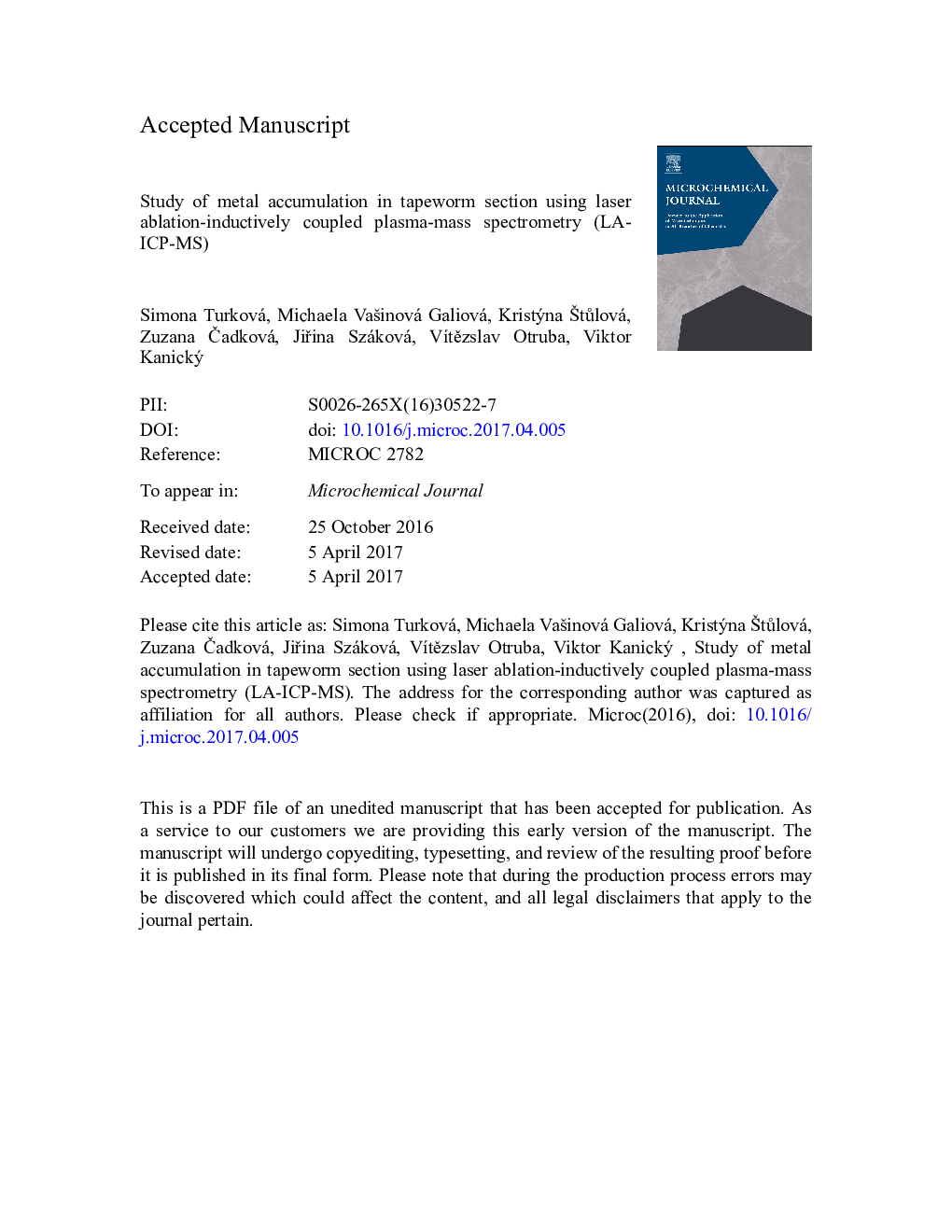| Article ID | Journal | Published Year | Pages | File Type |
|---|---|---|---|---|
| 5139044 | Microchemical Journal | 2017 | 23 Pages |
Abstract
LA-ICP-MS method was utilized for the elemental mapping of H. diminuta tissue as possible bio-accumulating organism. Since no suitable commercial standards for analysis of H. diminuta sections are available, synthetic matrix similar standards containing 0, 5, 10, 20 and 30 mg kgâ 1 of Fe and Pb as well as 0, 50, 100, 200, 300, 400 and 500 mg kgâ 1 of Zn were prepared by spiking agarose gel with elements of interest. Two different laser ablation ICP-MS systems were used, namely 213 nm LA-ICP-(Q)MS and 193 nm LA-ICP-(SF)MS, and compared in terms of their detection limits and achievable goodness of fit of linear calibration dependencies. Carbon 12C+ was used as internal reference element to correct for the different tissue density and absorption rates. The prepared set of multi-elemental agarose gel standards was utilized for the quantitative elemental mapping of H. diminuta paraffin-embedded thin sections using the 213 nm solid state Nd:YAG coupled to ICP-(Q)MS. The content of Zn as biogenic element was found to be relatively homogeneously distributed within the cross section of proglottid, primarily in reproductive structures (uterus, fertilized eggs) while the Pb elemental distribution was found to be more concentrated in the tegument (surface).
Related Topics
Physical Sciences and Engineering
Chemistry
Analytical Chemistry
Authors
Simona Turková, Michaela VaÅ¡inová Galiová, Kristýna Å tůlová, Zuzana Äadková, JiÅina Száková, VÃtÄzslav Otruba, Viktor Kanický,
